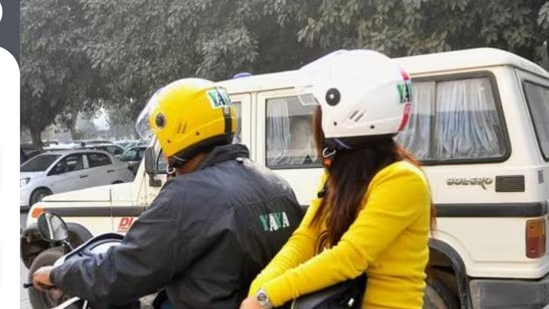Now Reading: Uber and Ola Suspend Bike Taxi Services in Bengaluru After Brief Return
-
01
Uber and Ola Suspend Bike Taxi Services in Bengaluru After Brief Return
Uber and Ola Suspend Bike Taxi Services in Bengaluru After Brief Return

Ride-hailing giants Uber and Ola have once again suspended their bike taxi services in Bengaluru, only days after briefly resuming operations. The decision follows renewed regulatory challenges, leaving commuters who had started relying on the service disappointed. For many daily travelers, especially students and office-goers in Tier 2 and Tier 3 pockets of the city, the sudden suspension has raised concerns about affordable and quick last-mile connectivity.
Bike taxis had gained popularity as a cost-effective and time-saving alternative to autos and cabs, particularly in congested areas. With Bengaluru’s traffic problems worsening each year, many residents saw bike rides as a practical solution to cover shorter distances. However, authorities have been at odds with aggregators, citing licensing issues, safety concerns, and the absence of clear policy frameworks for two-wheeler taxis.
The regulatory pushback stems largely from questions around legality. Current state transport laws do not explicitly recognize bike taxis as commercial passenger vehicles, making it difficult for companies to operate them within existing frameworks. This has led to frequent suspensions and uncertainty for both drivers and customers.
For Tier 2 cities observing Bengaluru’s experiment, the issue is especially relevant. Many smaller urban centers face similar traffic and connectivity challenges, and bike taxis could be an affordable option for students, delivery workers, and young professionals. However, the lack of a nationwide policy or uniform state-level guidelines keeps the model stuck in a grey area.
Drivers who invested in two-wheelers for this service are now in a vulnerable position. Many had joined bike taxi platforms as a way to earn flexible income, but the repeated stops have left them uncertain about stability. On the other hand, transport unions argue that allowing unregulated bike taxis could hurt traditional auto and taxi drivers already struggling to make ends meet.
Policy experts believe the solution lies in creating a structured regulatory framework. This could involve licensing requirements, safety checks, insurance mandates, and fare standardization, which would bring bike taxis into the mainstream while protecting commuters and drivers alike. Without such clarity, the cycle of launches and suspensions is likely to continue.
In conclusion, the suspension of Uber and Ola’s bike taxi services in Bengaluru highlights the urgent need for clear rules governing new-age mobility solutions. For a city known for its traffic bottlenecks and for Tier 2 towns exploring modern transport options, resolving this regulatory deadlock will be key to ensuring affordable, safe, and reliable travel choices for citizens
























